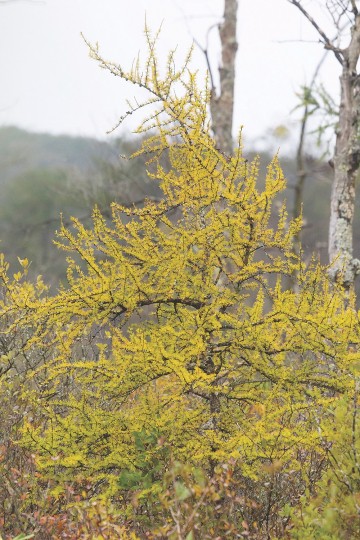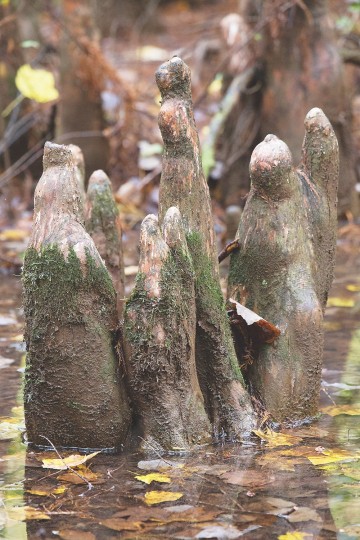Bald Cypress and Larch
From the Allegheny Mountains to the shores of the Chesapeake Bay, Maryland’s varied topography justifies our state slogan, America in Miniature. The autumn leaf-peeper can visit more than one of these variable landscapes in less than a day. How lucky are we?
Deciduous trees are what make a great autumn, well, autumn. The crimson glory of the red maple and the golden splendor of the American beech are complemented by other species showcasing shades of oranges, yellows and violets that make autumn in our eastern woodlands simply spectacular.
Maryland also offers another very special type of autumn foliage. Did you know that we are also home to two species of deciduous conifer?
Deciduous conifer: Is that some kind of oxymoron? You may be surprised to learn that there are conifer trees that lose their needles in autumn and, just like those maples and oaks, return come spring. They also change color, pairing nicely with our traditional foliage.
The two trees are the bald cypress (Taxodium distichum) and eastern larch (Larix laricina). Both can be found fairly easily in protected preserves owned by The Nature Conservancy. The bald cypress, a plant of the southeastern United States, lives in subtropical swamps. The larch is a tree of the cooler north, ranging from Alaska through Canada to the northeastern United States. Both trees are near the southernmost (larch) or northernmost (bald cypress) terminus of their range within Maryland’s borders.
Bay Weekly readers need not venture far to visit an ancient stand of bald cypress trees. Battle Creek Cypress Swamp in Calvert County was originally purchased by The Nature Conservancy to protect one of the northernmost stands of this enchanting species. So rare is it that it’s Maryland’s only stand of these majestic trees on the western side of the Chesapeake. The sanctuary is leased to Calvert County Parks and Recreation. You can transverse the swamp on a quarter-mile-long boardwalk.
The landscape here is primeval, offering a unique glimpse into the wild Chesapeake of old. Many of the bald cypress trees are old growth and of exceptional size. An autumn sojourn through this ancient land is mostly silent — and excellent for those seeking kinship with nature. But it is not uncommon to hear the call of the barred owl or to discover a tree frog while meandering the boardwalk and admiring the still beauty of the stand.

What of the foliage? I find it exceptional. The feathery needles turn from a light green to a rusty reddish-brown. Looking upward to the canopy, you can study the contrast of these needles to the deciduous trees growing in the swamp.
Another distinctive feature of the bald cypress is the presence of knees. These are the cone-shaped structures rising from the swamp and actually connected to the trees root system. While there are a few hypotheses in regard to the true function of knees, those trees growing in flood-prone areas tend to show more knees. Thus, Battle Creek has plenty of them for you to admire.

To see the larch, you’ll need to travel northwest a few miles past Frostburg. There, straddling the border of both Allegheny and Garrett counties, you will reach the Finzel Swamp Preserve, one of the last strongholds of the tree in Maryland. The preserve, managed and owned by The Nature Conservancy, is an example of a frost pocket, where cool mountain air is trapped by the surrounding hills, creating a microclimate hospitable to species more at home in the northern boreal biome. Larch, also called tamarack or American larch, survive here due to the restoration of the natural hydrology of the swamp. It has been lost in other areas due to changes in hydrology.
As at Battle Creek, entering the preserve lets you journey back in time. Here you experience what life was like in the much cooler Pleistocene era. Besides the larch, other northern flora here include red spruce, tawny cottongrass and speckled alder, as well as a host of other rare state species. Deciduous trees, as well as blueberry and cranberry, showcase a stunning collage of autumnal color to this central Appalachian wonderland. The addition of larch make it simply exquisite. Through October, its needles transform to a stunning shade of golden yellow.
When visiting these sanctuaries, remember they exist for us to enjoy due to the hard work of very dedicated people. I would encourage you to consider supporting The Nature Conservancy in its tireless efforts in protecting and preserving these incredible landscapes. These are unique locations that contribute to our home, America in miniature.
